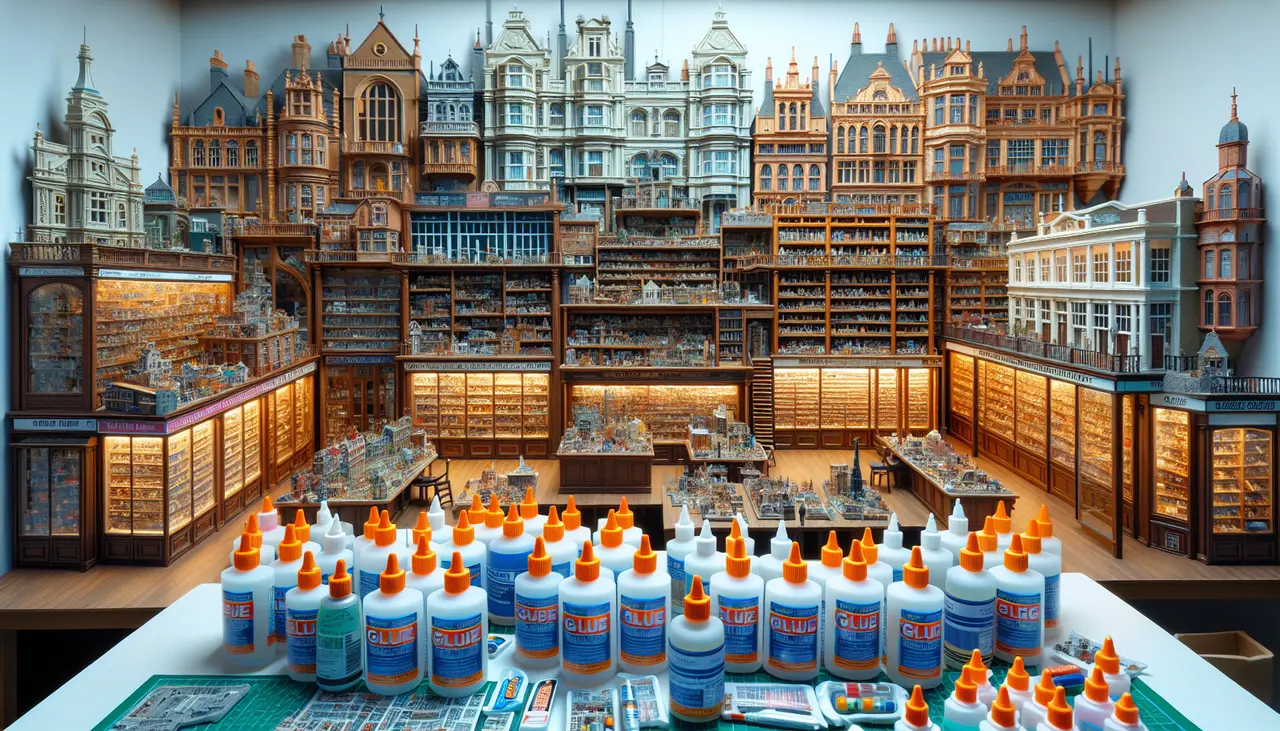Model glue is an essential tool for hobbyists, but its proper storage is crucial for safety and longevity. This guide provides simple, easy-to-follow steps to ensure your model glue remains effective and safe to use.
Understand the Types of Model Glue
Different types of model glue require different storage conditions. Common types include plastic cement, super glue (cyanoacrylate), and epoxy. Each type of adhesive has its unique properties and storage requirements. For instance, Revell’s Professional Liquid Cement is used for precision gluing and has specific storage recommendations.
Plastic cement is ideal for bonding polystyrene parts found in traditional scale model kits. Super glues, or cyanoacrylates, are renowned for their fast-bonding capabilities on various materials, including metal and non-polystyrene plastics. Epoxy adhesives consist of two components that you mix before application, each with different storage needs explained in this article.
Knowing the type of glue you are using helps in understanding its specific storage needs. For instance, while plastic cement should be kept sealed tightly to avoid evaporation, some epoxy glues may require refrigeration for optimal preservation.
To explore the variety of adhesives available and their specific uses, feel free to browse our Glue Collection at Fusion Scale Hobbies.
Store in a Cool, Dry Place
Heat and humidity can degrade the quality of model glue. Always store your glue in a cool, dry place to maintain its effectiveness. Ideal storage temperatures typically range between 15°C and 25°C, depending on the adhesive type. For example, maintaining the right temperature helps ensure the glue’s best performance.
Avoid areas with high humidity such as basements or bathrooms. A closet or a drawer in a climate-controlled room is often a perfect choice. Prolonged exposure to temperatures outside the ideal range can affect the glue’s bonding properties, making it less effective over time.
If you’re storing large quantities of glue, consider setting up an air-conditioned storage area to maintain a consistent temperature. This approach can be particularly useful if you are dedicated to the hobby and maintain a diverse array of adhesives.
Remember, keeping adhesives on a raised platform, away from cold floors, also helps in maintaining their integrity as suggested by experts.
Seal Tightly After Each Use
Make sure to tightly seal the glue container after each use. This prevents air from entering and drying out the glue. Airtight seals help in preserving the adhesive properties and extend its shelf life.
Many adhesives, particularly super glues, and plastic cements are highly susceptible to drying out. Always clean the nozzle after use to prevent buildup that can compromise the seal.
It’s also a good idea to use the original cap or lid that came with the glue, as it is designed to create an optimal seal. For frequent users, consider investing in secondary containers with airtight seals for an added layer of protection.
Keep Out of Reach of Children and Pets
Model glue can be hazardous if ingested or mishandled. Always store it in a place where children and pets cannot reach it. Keeping these chemicals away from kids and animals is a critical safety step for any hobbyist.
Consider using a locked drawer or a high shelf to store your adhesives. Even non-toxic glues like some PVA (white glue) can pose a choking hazard or cause other issues if ingested by younger children or pets.
Use Original Packaging for Storage
Keeping the glue in its original packaging helps protect it from environmental factors and accidental spills. The packaging is often designed to provide an optimal environment for the adhesive.
Original packaging typically includes vital information such as expiration dates and usage instructions that can be crucial for maintaining the product’s effectiveness.
If the original packaging is damaged or lost, ensure the new container is suitable for chemical storage and is labeled correctly to avoid accidental misuse.
Label the Expiry Date
Always note the expiry date of your model glue and label it clearly. Discard any glue that has passed its expiry date to ensure optimal performance. Expired glue may lose its bonding strength or not cure properly, potentially ruining your projects.
For those who use multiple types of adhesives, keeping a log or inventory can help track usage and shelf life efficiently. This practice ensures you always have fresh supplies ready for your next project.
Storing adhesives in a well-organized manner, with clearly visible labels, can also help in quick and efficient identification, saving you time and minimizing mistakes.
Safe Storage Ensures Longer Shelf Life
Storing model glue safely is not a challenging task, but it requires attention to detail and adherence to simple guidelines. By following the steps outlined above, you can extend the lifespan of your glue and maintain a safe environment for your modeling projects.










